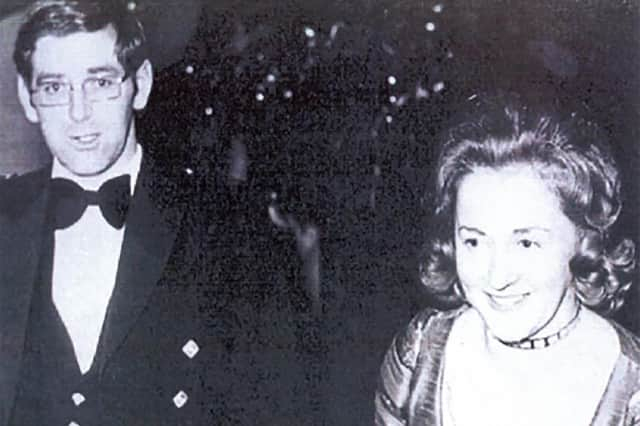William MacDowell's conviction for murdering Renee and Andrew MacRae was down to old-fashioned policing – Tom Wood


There’s little more frustrating for a police officer than to see a major case go unsolved. Worse if it’s the most dreadful of crimes, the murder of a young woman and her child. Worse still if you’re pretty sure you know who did it, but can’t prove it.
That’s exactly the predicament the old Northern Constabulary, latterly Police Scotland, found themselves during 46 years of investigation into the disappearance of Renee and her young son.
Advertisement
Hide AdAdvertisement
Hide AdWhen they went missing in 1976, local police feared the worst. It was widely known she was separated from her husband and in a relationship with William MacDowell, an accountant at her husband’s building firm.
It was even thought that her son was MacDowell’s child. For Renee to run off with MacDowell would have been no surprise but the manner of her disappearance raised concern.
The discovery of her burnt-out car, an expensive BMW, was suspicious. Why would she destroy the luxury car she loved?
Suspicions soon fell on MacDowell. It was known that while Renee desperately wanted to start a new life with him, his feelings were not as strong.
He stood to lose his marriage and a well-paid job. He certainly had the motive, the only reservation was over whether he would have killed his own son.
It was a stretch but MacDowell remained the prime suspect. The initial investigation was thorough, but without the bodies of Renee or Andrew there was no forensic evidence, and MacDowell was saying nothing.
The police never gave up. In 1987 the case was reopened and MacDowell was arrested. In 2004, there was another push with costly excavations at a suspected deposition site. In 2019, an old quarry was drained, its bottom sludge sifted painstakingly.
Pieces of the jigsaw gradually came together, not major breakthroughs but tiny strands of circumstantial evidence.
Advertisement
Hide AdAdvertisement
Hide AdNow, after nearly half a century and a long trial, MacDowell has been convicted.
We have become used to historic crimes being solved through the wonders of new forensic science, particularly DNA.
If samples were taken and retained properly at the time, there’s a good prospect of detection even decades later. But in the MacRae case, there was no forensic evidence, no bodies, no murder weapon and no DNA.
Instead the prosecution case was based on meticulously prepared circumstantial evidence, bringing together all the strands in a carefully crafted and compelling way.
A notable 19th-century Lord Chief Justice defined circumstantial evidence as a network of facts cast round the accused. Individual strands may be insufficient, but together they may be so tight that no effort on the part of the accused could break through. Silken threads of evidence combined to proved MacDowell guilty of the most dreadful crime.
Great credit to the meticulous Advocate Depute Alex Prentice KC and his team. And for the police historical crime unit, it’s another one wiped of the slate.
Be in no doubt as to the quality of this team of experienced investigators, only made possible by the size and synergies of a force like Police Scotland.
What’s next? Solving the murder of Alastair Wilson, the Nairn banker, perhaps !
Tom Wood is a writer and former police officer
